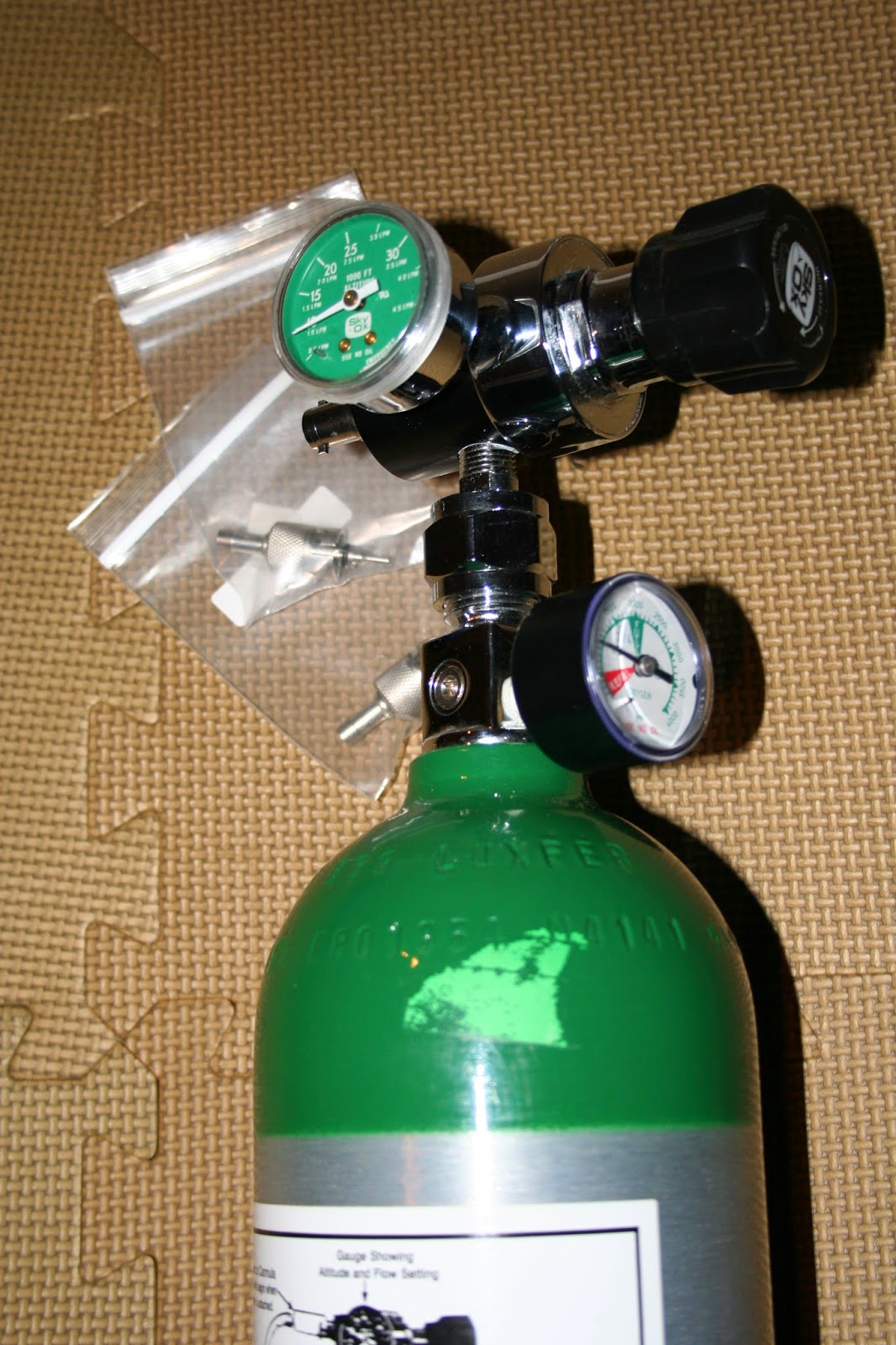One thing about the hangar community is you meet other pilots; my
goal is to learn at least one thing from each one I meet.
Jumping in a cockpit with another pilot and you'll recognize the
procedures and checklists, yet to meet two pilots who do everything
exactly the same. My neighbor Bob invited me for a ride along in his
Bonanza and showed me a blind-spot I had regarding the use of oxygen.
Thanks to Bob my situational awareness improved.
After living in Colorado for 14 years and
climbing too many peaks to list here, then flight training and memorizing FARs pertaining to oxygen use, I've heard of hypoxia; watched dad certify in
the altitude chamber at Plattsburgh AFB; and listened to ATC recordings of a
hypoxic pilot over western Colorado. I can recite hypoxia's symptoms,
contributing factors, and treatment, and led kids in discussions about high
elevation activities at Boy Scout meetings. I've had a few experiences with mild
hypoxia while hiking and biking in the high-country, usually aggravated by
dehydration. Even with all this awareness, training, and experience, I had a
gap.
Bob, my personal oxygen ambassador,
invited me to take a ride in his beautiful Bonanza. He said we'd take it high;
he loaded a bottle in the backseat and outfitted me with a cannula. I
love my Cheetah, but she's no straight tail Bonanza, we climbed through 10,000
feet in 4 minutes. Bob reaches in back and turns up the O2 bottle, then
leans over to the glove box grabs a pulse ox sensor and starts checking his
levels. Meanwhile, I'm flying the plane with the cannula coiled up in my
lap...thinking to myself, what's up with Bob?

Used SkyOx 4-port system bought from a retiring pilot
Bob was about to teach me something about
FAR 91.211 that I will not forget. 5 minutes into the flight, on a
standard day, still less than 11,000 feet (cabin pressure altitude), he hands
me his oximeter. My oxygen saturation read 84% and continued to drop
steadily, I put on the cannula and watched recovery in under a minute.
$39 pulse Oximeter bought from Amazon
I've flown plenty higher and longer while
solo over the mountains without oxygen, and felt fine. I believed the
regulation to be a good guideline, while incorrectly crediting myself for the
mile high life and ignorantly
congratulating myself for above tree-line stamina. This attitude is wrong
headed, a broken link in my chain. It's corrected now; let the O2 flow...thank
you Bob!
Lesson Learned:
Based on the oxygen saturation readings at
10,000 feet, 91.211 is a regulation, rather than a best practice; using it in
place of good judgment is poor judgment.
Part 91.211
(1) At cabin pressure altitudes above
12,500 feet (MSL) up to and including 14,000 feet (MSL) unless the required
minimum flight crew is provided with and uses supplemental oxygen for that part
of the flight at those altitudes that is of more than 30 minutes duration.
Action:
Oxygen goes on me and my passengers above 10,000 (density
altitude). This means every trip west I'm on the bottle now.
Benefits:
- Better cognitive reasoning - might come
in handy
- Stay awake - fair enough
- Avoid altitude sickness symptoms like
headaches - good
- Huffing O2 in-flight result in any
stamina boost on the trail? - Seems like it wouldn't hurt
It might have been interesting to fly the
edge of the regulation with one pilot on gas and the other not; taking oximeter measures, though I need no more convincing.

No comments:
Post a Comment